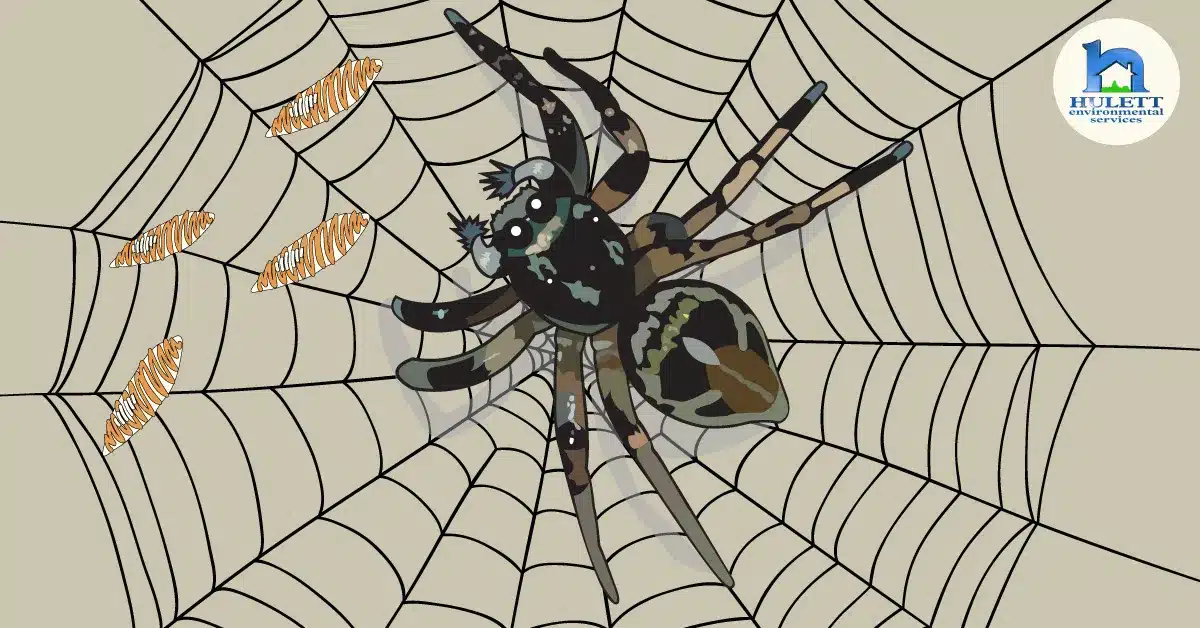
Mummified Tick Wrapped in Spider Silk and Trapped in Amber
Back in the prehistoric day, a hapless tick, probably clinging to a hairy-legged, tree-climbing dinosaur met its untimely demise in the snare of a spider’s web. Wrapped in silk, as a precaution or to save as a snack, the tick’s attempt to escape resulted in yet another cruel trick of nature. Enveloped in oozing tree resin, our tick became preserved in amber forever. In Michael Greshko’s May 25, National Geographic article, Greshko said this odd fossil is a big deal, as “it is the first of its kind ever found.” True, other bits of spider webs containing insects have been found before preserved in amber but “few fossil ticks have been recovered before” and, Greshko said, “none preserve evidence of spiders and ticks interacting.”
Rare and unusual find
The main take away from this find seems to be “the rarity and unusualness of this discovery,” said the study’s leader, Jason Dunlop, arachnid curator at the Berlin Museum of Natural History. Other arachnologists, such as Paula Cushing at the Denver Museum of Natural Sciences said, “it’s fascinating to see evidence of prey wrapping in fossils.”
Verifying filaments
Determining if the filaments surrounding the tick were actually silk or some kind of fungi, coauthor, Lidia Chitimia-Dobler offered answers. A tick expert at the Institute for Microbiology of the Bundeswehr, Chitimia-Dobler illustrated how ticks decompose. Showing that fungi start at tick’s orifices and spreads from there, she concluded that there was no evidence of a fungal origin for the filaments but instead, the filaments shroud the tick exactly like a spider wrapping its prey would.
Spider webs near small raptors nests
American Museum of Natural History paleontologist, David Grimaldi, thinks that spiders probably built their webs close to the cavities in trees where raptors nested. “It is quite likely that spider webs were close to cavities in these trees where the little raptors and their parasites resided, perhaps even stretched across nesting holes,” he said.
What kind of spider?
What kind of spider built the web that caught the tick? Well, scientists remain somewhat unclear on that point. “We haven’t got a huge amount of knowledge about which spiders prey on ticks,” said University of Kansas paleontologist and coauthor, Paul Selden, adding that “those for which we have records belong to groups of spiders whose geological records don’t go back that far.” Selina Groh, University College London paleontology Ph.D. candidate studies arachnids. “Their simple absence from amber,” she said, “does not mean they could not have been responsible for wrapping the tick.” This latest find, along with other “exciting arachnids in the Burma amber,” according to Selden opens new roads in learning more about how arachnids (spiders) evolved.
Take precautions when dealing with ticks
Taking precautions before going on walks or hikes can help control ticks along with equipping your four-legged family members with tick and flea collars, ingestible or topical treatments, available from your vet and pet stores. When hiking or walking near tall grass: • Apply insect repellent • Wear long-sleeves and closed-toe shoes • Stay on marked trails and paths • Check thoroughly for ticks when returning from hikes or walks • Run hiking clothes in the dryer on high heat for 10 minutes immediately after walks As for spiders, most spiders in the US, with the exception of black widows and brown recluse, don’t pose health threats to people or pets. Apart from their scary reputations, spiders can be quite beneficial in controlling other pests.
Hulett Healthy Home
At Hulett, we believe prevention works better than control. Make your home unattractive to pests, by sealing all cracks and crevices in your foundation and around entry points, correcting water prone areas and cleaning your house thoroughly. Also, reduce harborage areas around the exterior of your home like debris, overgrown grass, ornamentals and trees. We offer free in-home inspections, treating your home with our Integrated Pest Management (IPM) approach that safeguards your loved ones from household pests. Creating a pest barrier around your home, Hulett guarantees you’ll be satisfied with our services. For reliable, environmentally-responsible pest prevention, Just call Hulett!



